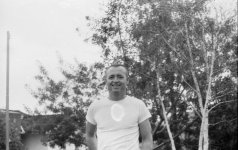ls7corvete
Member
Well I just purchased a GSW690 and I am hoping to learn alot with it, I bought it on credit so I need to learn to love it before I start accruing interest or sell it.
With that said I thought I would make a post here and get a bit invovled in some new forums. Of coarse I come with a new problem as well....
I plan to use the new camera with a Canon A1 that I have to both save the larger film for the shots I feel more confident about as well as use the light metering of the canon w/ gray card. The only problem is that the canon is stuck at the 200 ISO(seems like someone dropped it or something) setting and it seems that 220 only comes in 160. Can I just use the exposure compensation knob on the A1 to adjust for the difference in film speed? Seems easy enough, IDK how much compensation would be needed though.
http://www.mir.com.my/rb/photography/companies/canon/fdresources/SLRs/a1/manual/htm/special.html
Thanks for the help
BTW I plan to scan with a epson 4490, touch up in photoshop and print what I like.
With that said I thought I would make a post here and get a bit invovled in some new forums. Of coarse I come with a new problem as well....
I plan to use the new camera with a Canon A1 that I have to both save the larger film for the shots I feel more confident about as well as use the light metering of the canon w/ gray card. The only problem is that the canon is stuck at the 200 ISO(seems like someone dropped it or something) setting and it seems that 220 only comes in 160. Can I just use the exposure compensation knob on the A1 to adjust for the difference in film speed? Seems easy enough, IDK how much compensation would be needed though.
http://www.mir.com.my/rb/photography/companies/canon/fdresources/SLRs/a1/manual/htm/special.html
Thanks for the help
BTW I plan to scan with a epson 4490, touch up in photoshop and print what I like.





